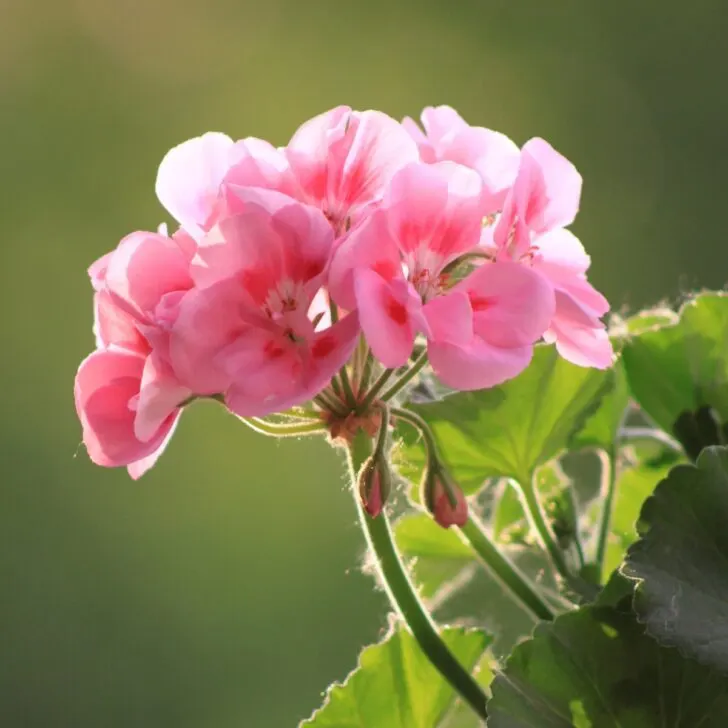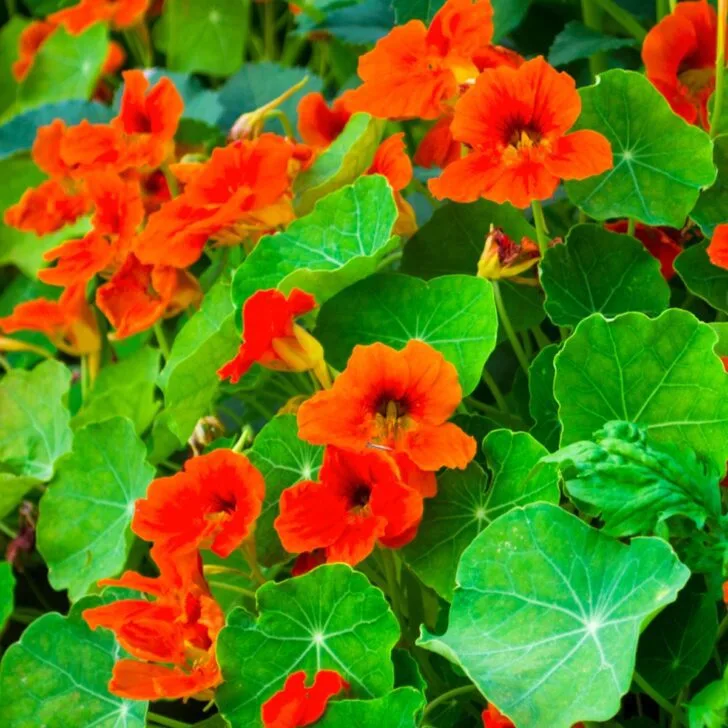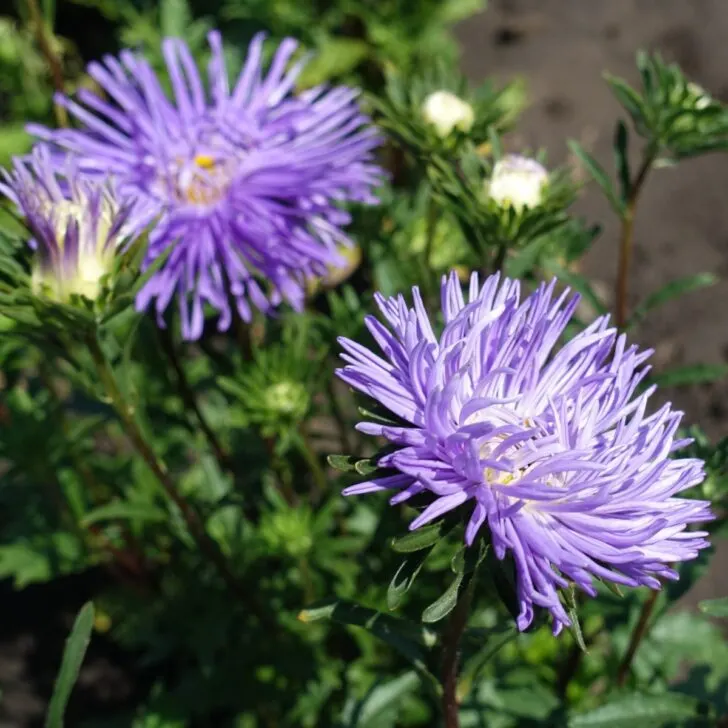Learn how to grow scabiosa (also known as pincushion flower) from seed with our guide for beautiful, unique blooms in your garden this year!
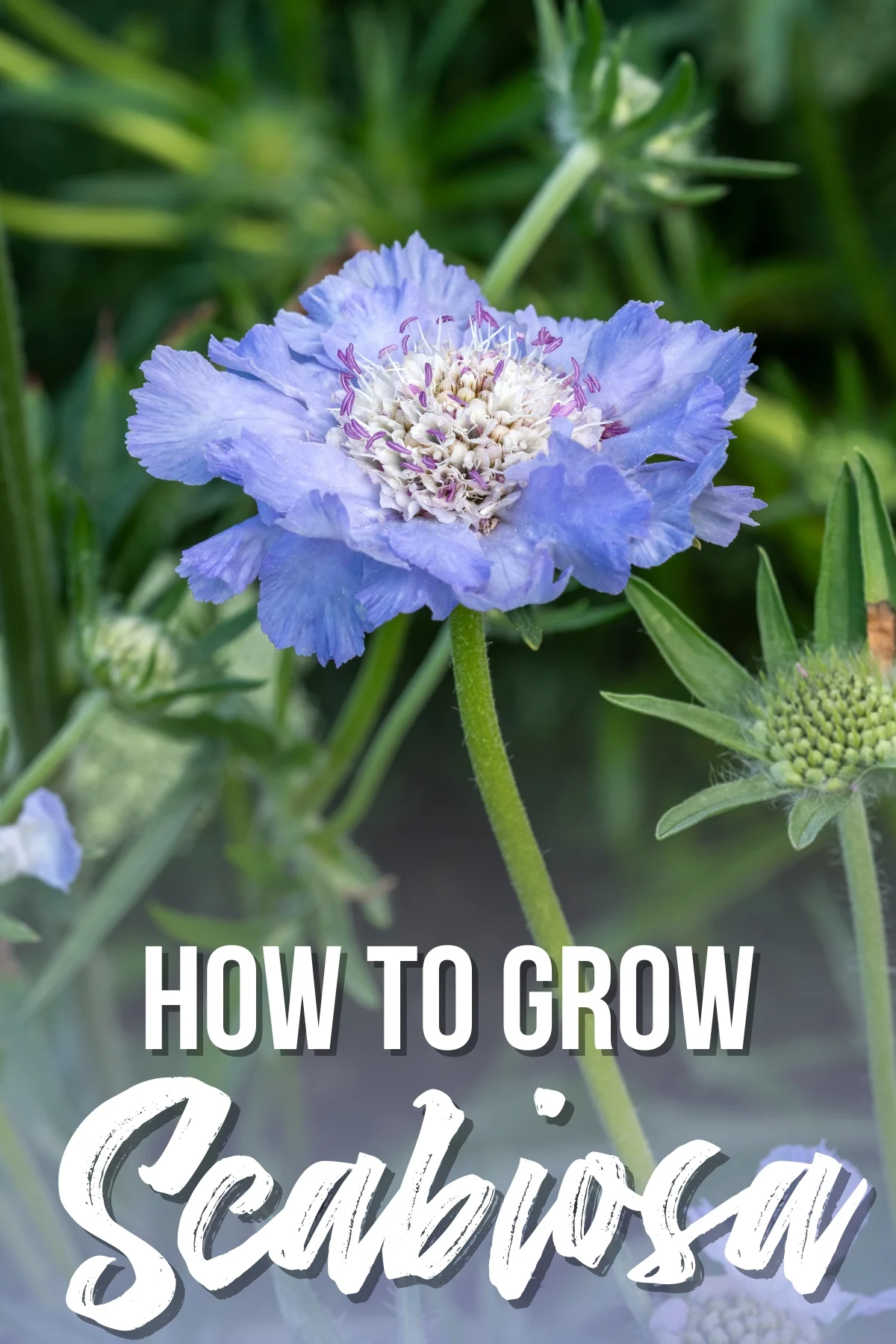
Scabiosa, also known as the Pincushion flower, are easy flowers to grow from seed. The nickname "pincushion flower" is due to their distinctive stamens that protrude from the tight, spherical blossoms, resembling pins stuck in a pincushion.
Scabiosa plants are prolific bloomers that can grow anywhere between 20 to 50 flowers on their slender stems. Some varieties, such as Fama, are short-lived perennials that will pop up in your garden year after year.
Scabiosa not only adds beauty to your garden while in bloom, but they also make excellent dried flowers, allowing you to enjoy their charm indoors and throughout the year.
Here's how to grow scabiosa from seed!
This post contains affiliate links for your convenience. Purchases made through these links may earn me a small commission at no additional cost to you.
Types of Scabiosa
Scabiosa flowers come in a variety of colors, shapes, and sizes, providing gardeners with a diverse range of options. Some popular types of scabiosa include:
Scabiosa caucasica: Also known as sweet scabious, this variety produces large, white or blue blooms on tall stems. This type of scabiosa is a short-lived perennial, coming back for about three years. The most popular variety is the Fama series, and I'm growing the white and deep blue ones this season.
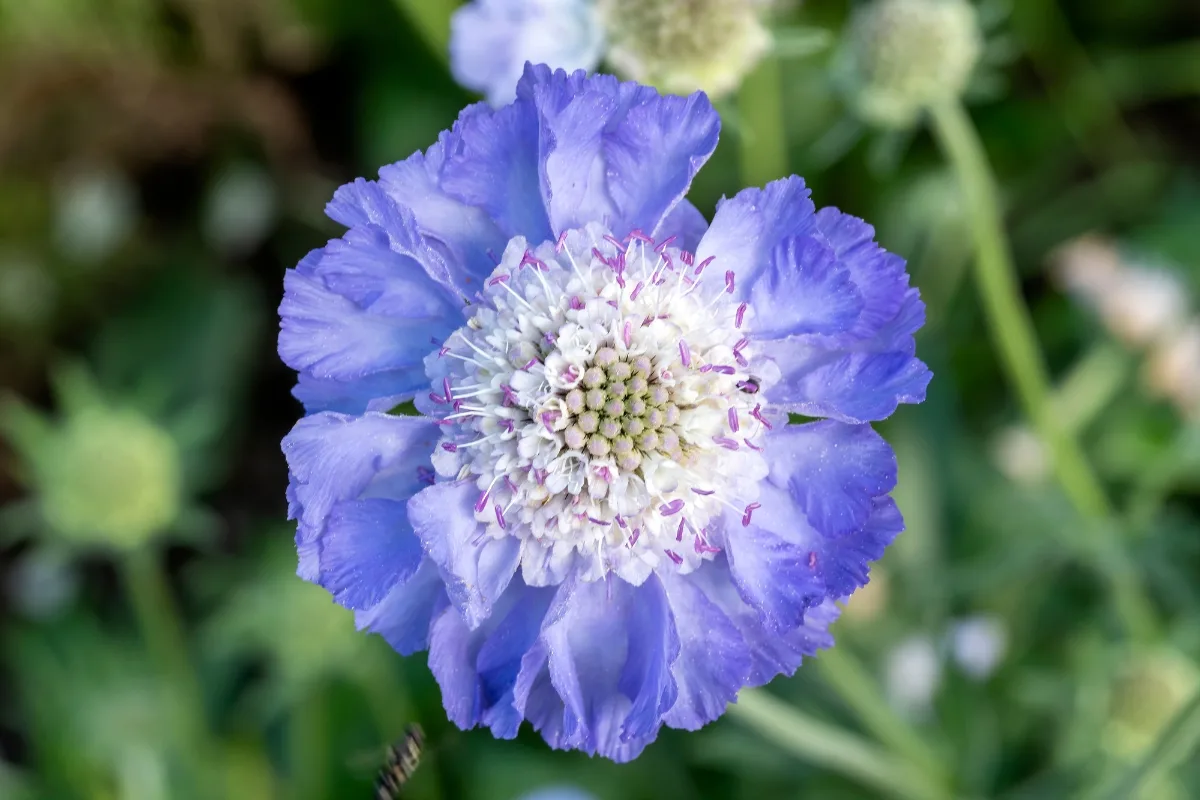
Scabiosa atropurpurea: Commonly referred to as mourning bride, this annual variety offers a mix of deep red, purple, white, pink, and lavender flowers. The flowers are more compact and rounded, making it easy to see where it got its nickname.

Scabiosa stellata: These unusual flowers, also known as starflower, are grown for their interesting looking seed pods. When the petals fall off, it reveals a sphere with star centers in each pod!
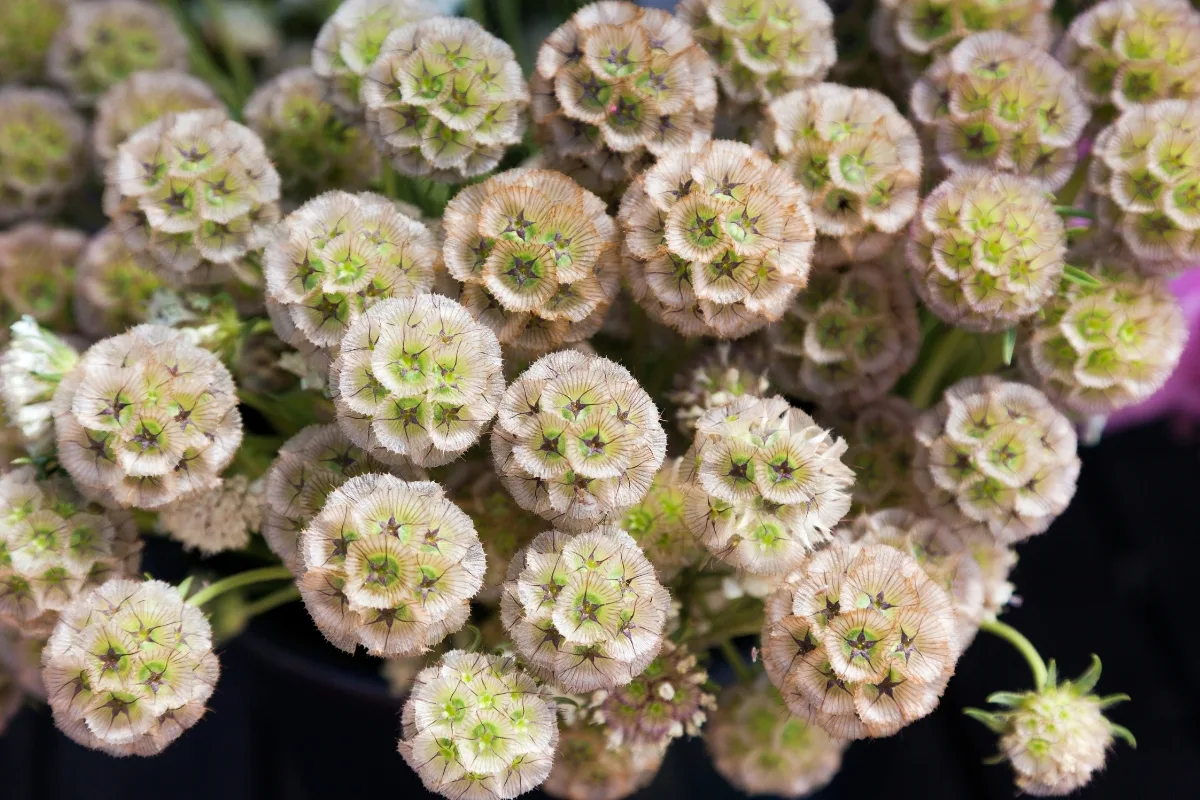
How to Plant Scabiosa Seeds
By following the proper sowing techniques and understanding the specific needs of scabiosa, you'll be well on your way to enjoying their delightful blooms.
What do scabiosa seeds look like?
Scabiosa seeds come in these funny looking tan pods that resemble a badminton shuttlecock. You can see some of the black, stringy seeds poking out from the open end of the pod. I try to plant the pods with those ends facing up.

When to plant scabiosa seeds
To achieve the best results, sow scabiosa seeds indoors 6-8 weeks before the last frost in your area. If you want to plant your seeds directly into the ground, wait until after your last frost date.
Preparing the Seed Starting Mix
Moisten the seed starting mix with water until it's damp but not overly saturated. The soil should hold its shape when formed into a ball but not dripping water when squeezed.
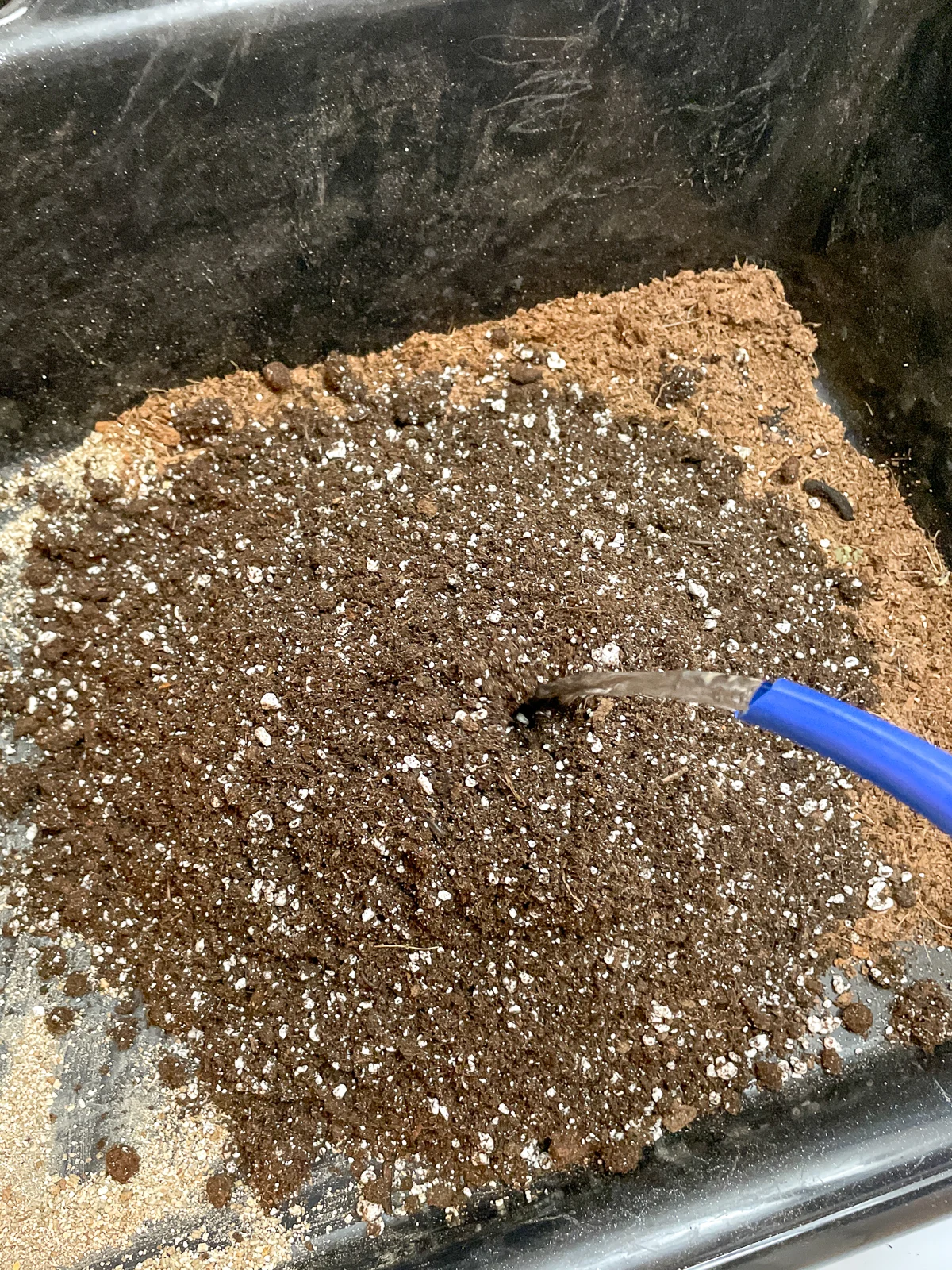
Fill your Seed Trays or Pots
Fill your clean seed trays or pots with the pre-moistened seed starting mix, pressing it down gently to remove any air pockets. Leave approximately ¼-inch of space from the top of each cell or pot to allow room for watering.
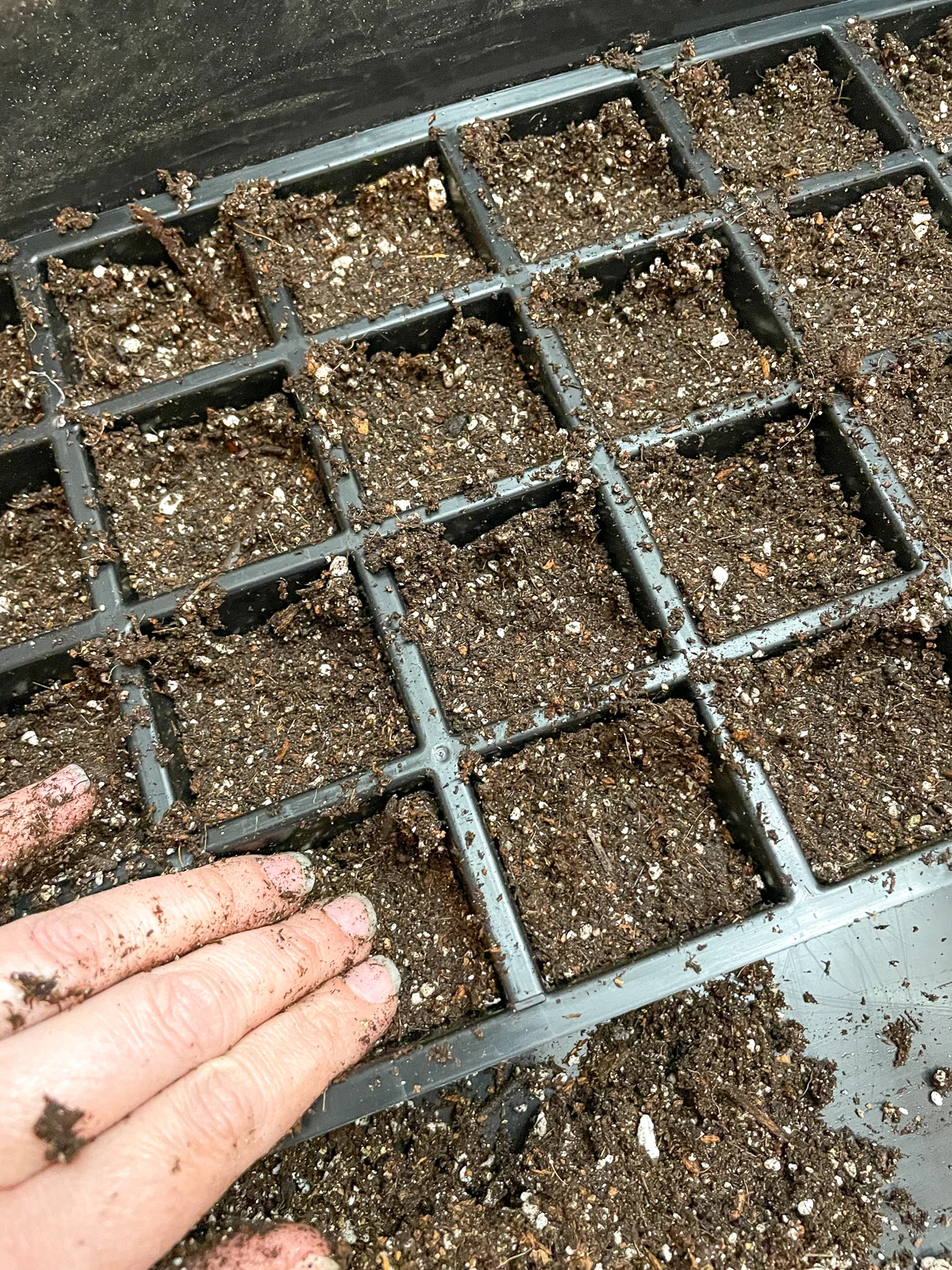
Sow your seeds
Leave the seeds in their papery pods. I just stick mine into the soil with the open end facing up. Since they need light to germinate, barely cover them with soil or sprinkle a very thin layer of vermiculite on top.
Water, Temperature and Humidity
Keep the soil consistently moist but not waterlogged during the germination process. Covering the trays or pots with a clear plastic dome or plastic wrap can help maintain humidity.
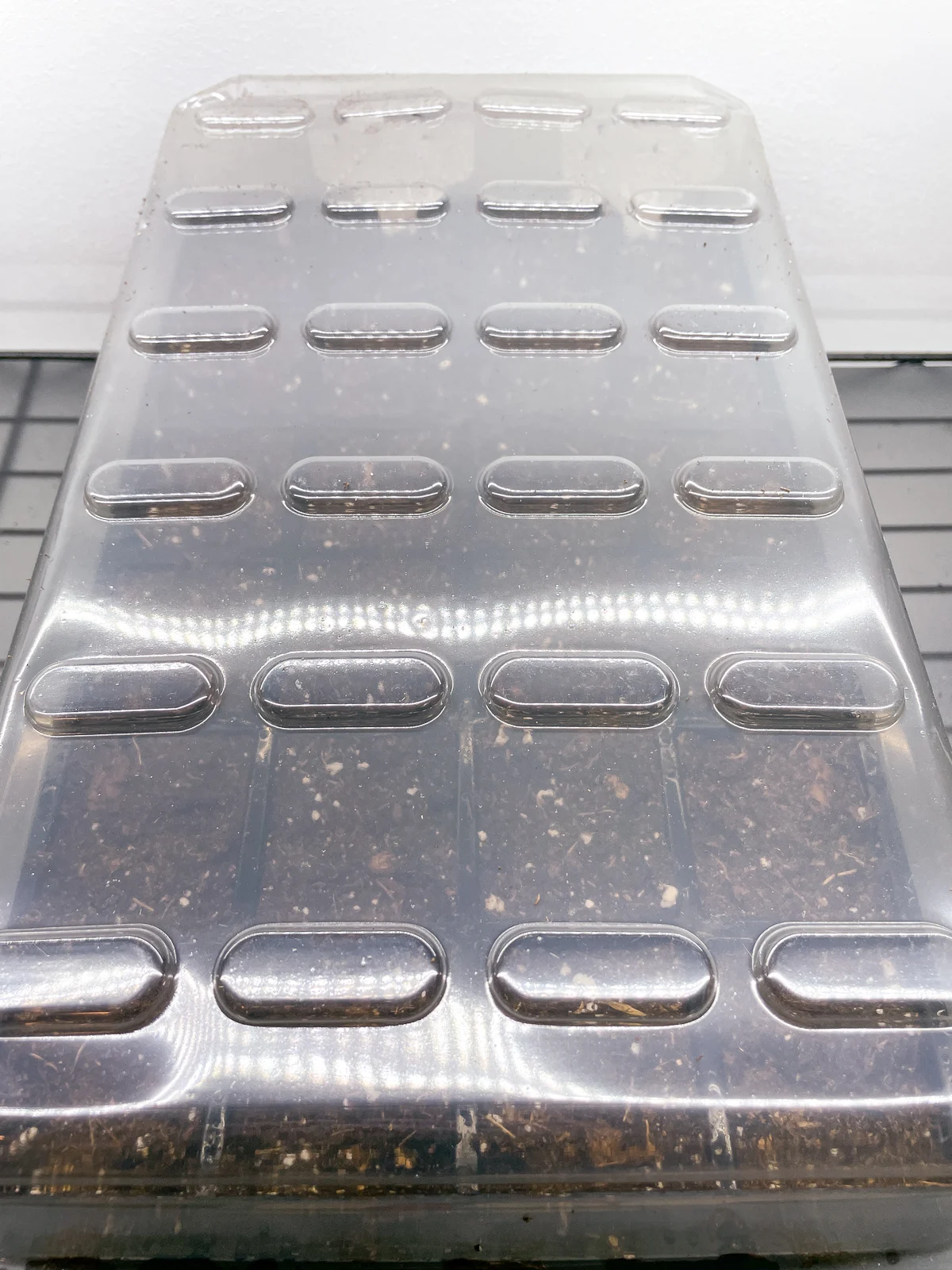
Keep the seed trays at room temperature (between 65-70°F) to encourage germination. If you're growing in a colder location, such as a garage, you may need to use a seedling heat mat to keep temperatures consistent.
Place the trays or pots in a bright location with plenty of sunlight or under grow lights. Scabiosa seeds usually germinate within 10-20 days. Once the seedlings have emerged, remove the plastic cover, and continue to provide light and water as needed.
Transplanting Scabiosa Seedlings
After the last frost has passed and the seedlings have developed at least two sets of true leaves, you can transplant them into the garden. Gradually acclimate the seedlings to outdoor conditions over a week by placing them outside for a few hours each day, gradually increasing the time spent outdoors.
Spacing
When transplanting, space scabiosa plants 12-18 inches apart. Adequate spacing not only promotes healthy development but also helps to prevent the spread of diseases and pests.

Sunlight requirements
Perennial scabiosa, such as the Fama series, thrives best in locations with full sun to partial shade. Annual scabiosa requires full sun. To ensure the healthiest growth and most vibrant blooms, provide your scabiosa plants with ample sunlight throughout the day.
Soil conditions
Rich, well-draining soil is crucial for the successful growth of scabiosa. Before planting, it's wise to amend your soil with compost or organic matter to improve its fertility and drainage capabilities. A slightly acidic to neutral pH level, between 6.0 and 7.0, is also preferable for these plants.
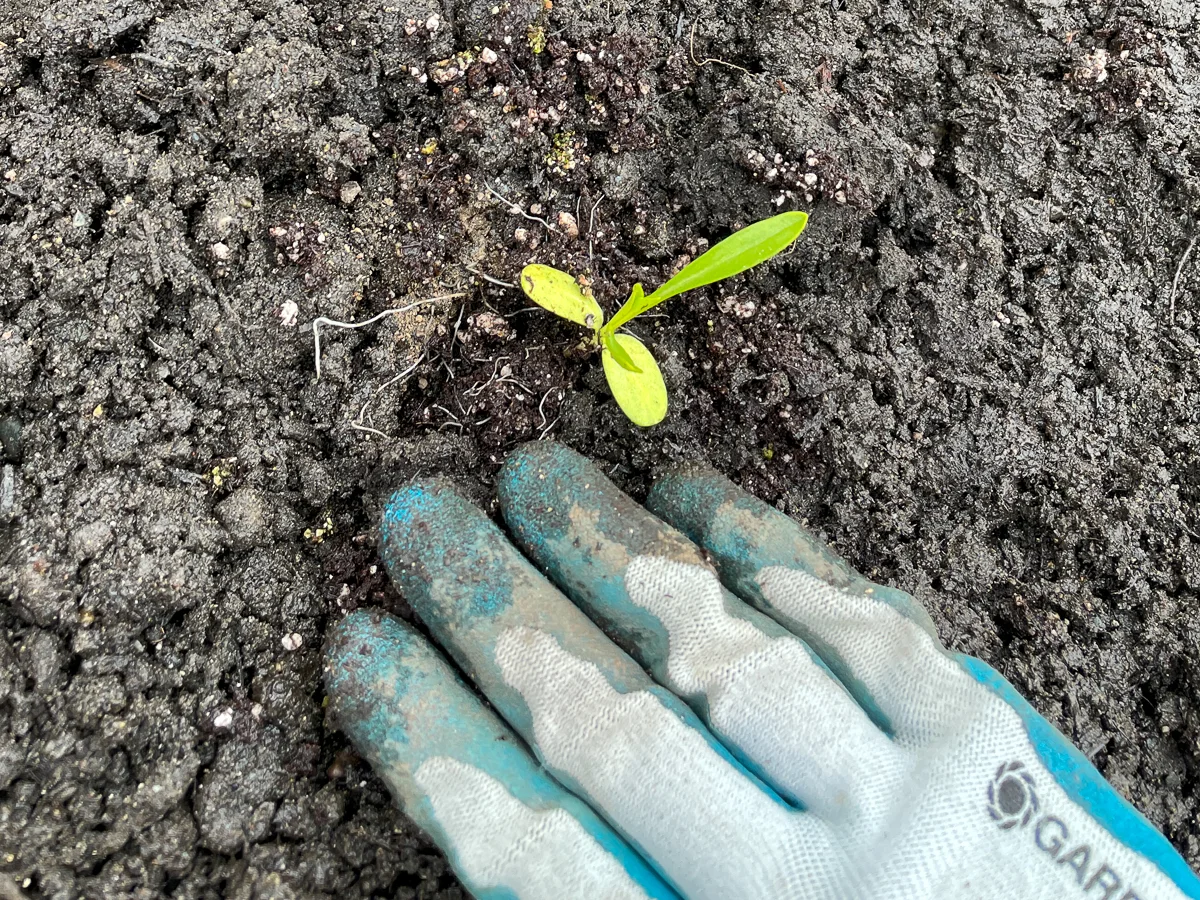
I'm planting the Fama White and Fama Deep Blue seedlings in a raised bed that receives some shade from our Japanese maple tree in the middle of the day. I alternated the two colors, so they'll mix together and create a beautiful display in our cut flower garden!
Frequently Asked Questions
Yes, scabiosa plants are known to be deer resistant, making them a great choice for gardens in areas with a high deer population.
While rabbits may nibble on scabiosa plants, they generally do not prefer them. However, it's always a good idea to use protective measures, like fencing, to keep rabbits away from your garden.
Scabiosa seeds typically do not require stratification. However, if you experience difficulty with germination, you may want to try cold stratification by placing the seeds in a sealed plastic bag with moistened peat moss and storing them in the refrigerator for a few weeks before sowing.
Yes, scabiosa can be grown in pots or containers. Choose a pot with good drainage and fill it with well-draining, fertile soil. Ensure the pot is large enough to accommodate the mature size of your scabiosa plant.
Pinching back scabiosa plants is not necessary, but doing so can encourage bushier growth and more blooms. To pinch your plants, simply remove the growing tips when they're young, leaving a few sets of leaves below. This will help promote branching and an overall fuller appearance.
Check out these other flowers you can grow from seed!



